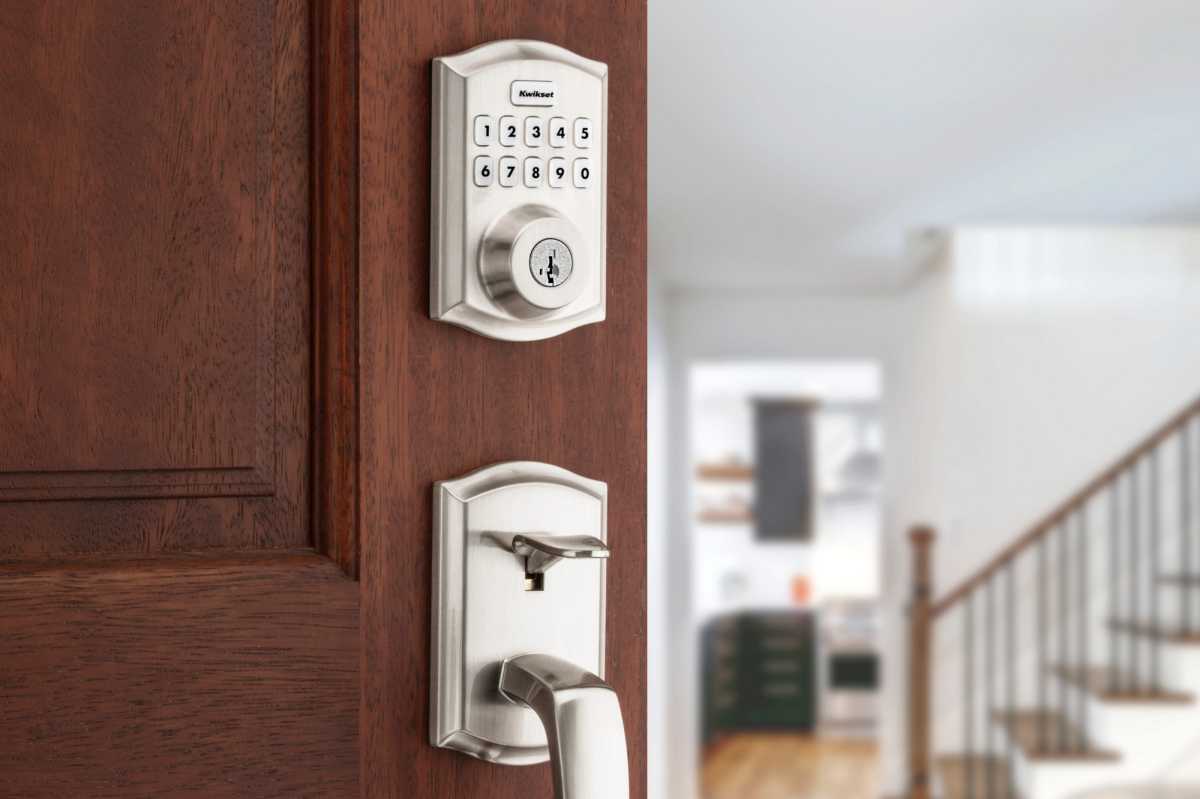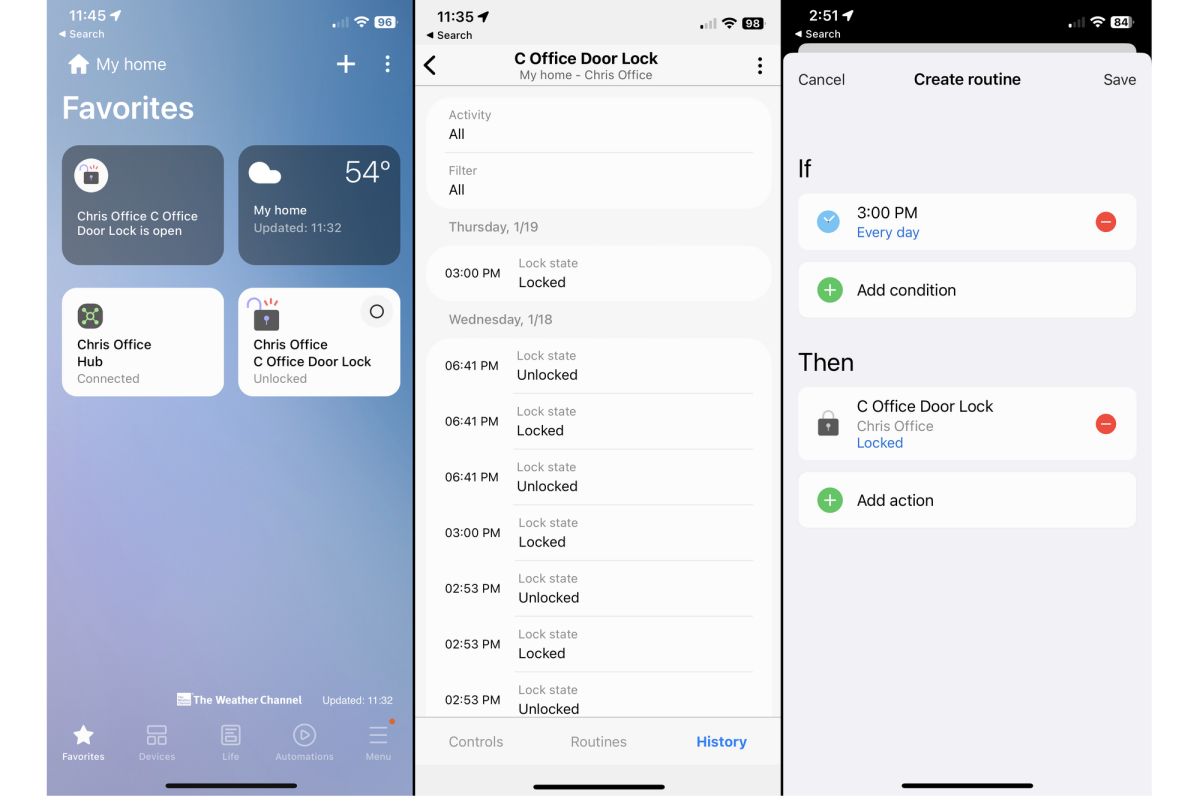Expert's Rating
Pros
- Two design choices and either three or four finish options
- Based on the Z-Wave 700 chipset
- Sturdy physical build
- Backlit buttons
- Inexpensive
Cons
- Largely dependent on a Z-Wave smart home hub
- Keypad Consists of soft buttons (versus a touchscreen)
- Incompatible with Ring Alarm (some other Kwikset Z-Wave locks are)
Our Verdict
The Kwikset HC620 is a very affordable Z-Wave lock; but by its nature, only buyers who have Z-Wave smart home hubs will find it appealing.
Best Prices Today: Kwikset Home Connect 620
If you’ve built your smart home around the Z-Wave standard and want an inexpensive smart lock that’s compatible with it, the Kwikset Home Connect 620 (aka HC620), is a great choice. It’s built around the Z-Wave 700 chipset but is backward compatible with most older Z-Wave smart home hubs. If you don’t have a Z-Wave smart home system and don’t plan to acquire one, you’ll want to choose a different type of smart lock.
This review is part of TechHive’s coverage of the best smart locks.
The Kwikset HC620 is available in two designs—Contemporary and Traditional—and in several finishes for each design: polished chrome, satin nickel, and Venetian bronze. The Contemporary model is also available in a matte black finish. Both designs feature a backlit, a rubber 10-button numeric keypad, plus a single action button. The lock can also be opened with a physical key or a third-party app (more on that in a bit).
The Kwikset Home Connect 620 is a highly affordable smart deadbolt that’s compatible with most Z-Wave-based smart home systems.
Kwikset offers a unique DIY re-keying system that lets you use any existing Kwikset KW1 key with the lock. This is a great option for homeowners with Kwikset locks on several exterior doors because it eliminates the need to carry a separate key for each lock.

The Kwikset HC620 in Traditional style, with a polished chrome finish. The lock pictured at the top of the page is the Contemporary style in a satin nickel finish.
Kwikset
Kwikset is an old hand when it comes to Z-Wave, and if you have a compatible smart home hub, the Z-Wave SmartStart feature of the Z-Wave 700 chipset allows you to enroll a device before you ever turn it on, simply by scanning the Z-Wave QR code on the hardware. Unfortunately, my older Samsung SmartThings hub doesn’t support that feature (and this lock is entirely incompatible with Ring Alarm systems), so I had to enroll it the old-fashioned way. The good news is that this process is not much more onerous than using SmartStart: A quick QR code scan through the SmartThings app had me connected in less than a minute.
The Kwikset HC620 smart lock is easy to install
Before that, of course, I had to physically install the device on the door and power it up. Kwikset’s broadsheet set of instructions aren’t the most accessible, but by and large the process is straightforward and very similar to other door locks. Two escutcheons sandwich the door, with two bolts holding the two pieces together. From there, electronics are connected via a cable snaking beneath the door hardware and two small screws that attach the motor to the interior escutcheon. Power is provided by 4 AA batteries (included).
My only hiccup with physical installation involved getting a clean connection between the motor and the interior escutcheon. This was probably due to the fat cable connector that must sit just beneath the thumb-turn. It’s hard to get this cable situated to keep the motor assembly flush against the door. If it isn’t, the lock won’t turn smoothly; in fact, it can jam. I spent most of my installation time trying to wedge that cable into place just so, and after about 10 minutes of trial and error, I finally got things working smoothly.
Programming the Kwikset HC620

As with most Z-Wave locks, the Kwikset HC620 doesn’t come with its own app. You can program PINs on the lock itself, but most other tasks will be handled by the app for whatever Z-Wave-based smart home hub you use. We tested the lock with a Samsung SmartThings hub.
Christopher Null/Foundry
When it comes to programming the Kwikset HC620, veteran Z-Wave users won’t be surprised to learn that Kwikset doesn’t provide its own app for this purpose. More often than not, smart lock buyers will use whatever software came with their smart home hub. That said, you can program up to 250 unique PINs without any app at all, simply by tapping in code combinations on the lock’s numeric keypad.
The lock itself, however, doesn’t let you restrict how these codes are used. You can’t restrict PINs by time or date, for example, and you can’t create one-time codes. Give someone a working code, and they’ll be able to unlock the lock 24/7. Additional features, such as muting the unit’s beep feedback or setting its auto-lock feature (with time-delay options ranging from 30 to 600 seconds), can also be configured through keypad combinations.
Smart home hub lock features vary. With the SmartThings app, for example, I found a logging system to record lock and unlock operations, but there’s no data stored on whether a code, key, or an app was used. I could also create schedules—automatically lock the door at 10:00 p.m. every night, for example. Vivint’s smart home system has similar features and limitations, but it can be programmed so that locking and unlocking the door at the HC620’s keypad automatically arms and disarms that security system respectively.
The Kwikset HC620 smart lock is an excellent value
I never encountered any issues working with Kwikset HC620 in daily use, finding it fast and responsive. As well, it never disconnected from my hub throughout testing. Kwikset’s latest Z-Wave deadbolt is affordable, too, with the Contemporary model in polished chrome selling for less than $116 at press time. While some finishes cost more, you should be able to find one that fits your home’s décor.
The Kwikset HC620 is the best value in Z-Wave deadbolts on the market today; it’s a great entry-level choice for smart homes that revolve around that standard.



